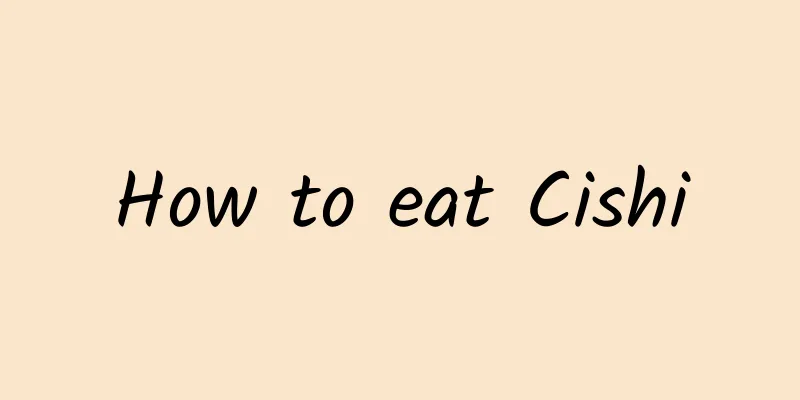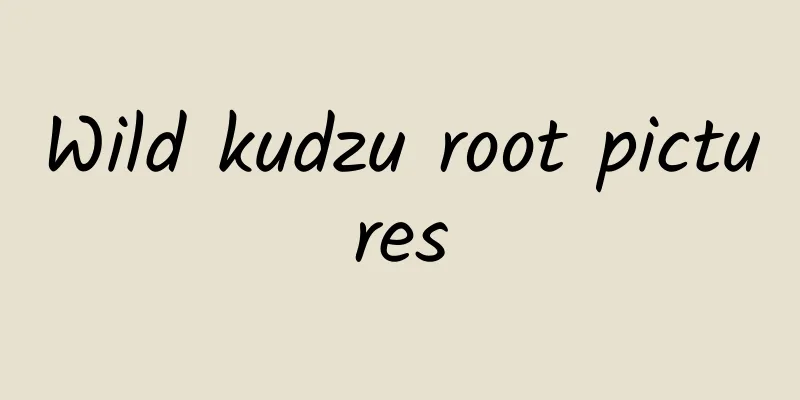The efficacy and function of ground bee

|
Many people know that ground bee larvae have unique therapeutic effects on some diseases. In fact, the magical effects of ground bee larvae are far more than that. The following will tell you in detail about the effects of ground bee larvae. 【English name】 all-grass of Nippon Cinquefoil [Other names] Wolf tooth Potentilla, iron weight, iron button, mountain bee, three-clawed gold, silk grass, ground spider, iron pillow, white golden plum, three-piece wind, ground wind, three-leaf snake grass, bee son Astragalus, single-leg umbrella, single-legged Potentilla, three-leaf cabbage, three-leaf thin fan, three-leaf snakeberry, large-flowered false snakeberry, three leaves, soft-stemmed snake twist, hairy monkey, bee seven, soil bee, big rescue, ground bone, independent golden egg [Source] Medicinal material source: the roots and whole herbs of Potentilla trifoliata and Potentilla sinensis of the Rosaceae family. [Original form] 1. Potentilla trifoliata is a perennial herb, 8-25cm tall. Runners present or not obvious. The roots are many-branched and clustered. The flower stems are slender, erect or ascending, and sparsely pubescent. Basal leaves are palmately trifoliate, 4-30cm long including petioles; stipules are membranous, brown, and sparsely pubescent; leaflets are oblong, ovate or elliptic, acute or obtuse at apex, cuneate or broadly cuneate at base, with numerous acute serrations on margin, sparsely pubescent on both sides, denser along veins on the underside; 1-2 stem leaves, leaflets are similar to basal leaves, but petioles are very short and leaf margins have fewer serrations; stipules are herbaceous, notched and sharply fissured, and sparsely pubescent. Flowers are bisexual; corymbose cymes are terminal; flower diameter is 0.8-1cm; sepals are 5, triangular ovate, acuminate at the apex, epicalyx segments are 5, lanceolate, acuminate at the apex, nearly as long as sepals, and covered with flat soft hairs; petals are 5, oblong-obovate, slightly concave or obtuse at the apex, light yellow; style is nearly terminal, thick at the top and thin at the base. Mature achenes are ovoid, 0.5-1mm in diameter, with obvious veins on the surface. Flowering and fruiting period is from March to June. [Habitat distribution] Ecological environment: 1. Growing in hillside grasslands, stream banks and shady and moist places under sparse woods at an altitude of 300-2100m. [Properties] Identification of properties: The rhizome of Potentilla trifoliata is fusiform, cylindrical or dumbbell-shaped, slightly curved, and some are shaped like a bee's abdomen. It is 1.5-4cm long and 0.5-1.2cm in diameter. The surface is gray-brown or yellow-brown, rough, with wrinkles and protruding root marks and fibrous roots. There are petiole remnants at the top and it is covered with soft hairs. It is hard and not easy to break. The cross section is granular, dark brown or black brown, with a darker color in the center. Small white crystals can be seen under a magnifying glass. It has a faint smell, tastes slightly bitter and astringent, and has a slightly cooling feeling. [Identification] For physical and chemical identification, take 1 g of crude powder of this product, add 20 ml of ethanol, reflux for 15 min, filter, and use the filtrate for the following tests: (1) Take 1 ml of the filtrate, add a small amount of sodium nitrite and about 1 ml of sulfuric acid, the solution will turn red. 【Nature and flavor】 sweet; warm 【Meridian】 Lung; Large Intestine; Stomach; Liver 【Functions and indications】 Clears away heat and detoxifies, heals sores and stops bleeding, disperses blood stasis and relieves pain. Mainly used for cough, dysentery, enteritis, carbuncle, burn, mouth sore, osteomyelitis, bone tuberculosis, scrofula, hemorrhoids, snake bites, metrorrhagia, menorrhagia, postpartum hemorrhage, traumatic bleeding, stomachache, toothache, sternum pain, back pain, and traumatic injury [Usage and Dosage] For oral use: decoct in water, 10-15g; grind into powder, 1-3g; or soak in wine. For external use: take appropriate amount, mash and apply; or decoct in water for washing; or grind into powder and apply. [Discussions by various scholars] "Xinhua Compendium of Materia Medica": It is an important medicine for treating injuries from falls. 【Excerpt】 Chinese Materia Medica The effects and functions of ground bees are varied, and we should choose the appropriate method of consumption according to different physical symptoms. In life, we can learn more about this when we have free time. |
<<: The efficacy and function of silkworm cocoon grass
>>: The efficacy and function of maple bark
Recommend
Can cloves be soaked in water and drunk?
Although cloves are very common in daily life, ma...
What are the taboos of angelica powder
When it comes to angelica, everyone must be famil...
One training session consumes 24 million kWh of electricity. Why does AI consume so much electricity?
Just the GPU of GPT-4 consumes 24 million kWh of ...
The faster you lose weight, the better? Can you lose weight by not eating staple foods? Many people fall into these misunderstandings, check yourself quickly
"I was born to gain weight even if I drink c...
Can humans eventually become an interstellar civilization? Musk said he wants to become a multi-planet species, how long will it take?
The answer is yes, but the prerequisite is that h...
The efficacy and function of castor
The world is full of wonders, and Chinese medicin...
Is it more hygienic to fold the quilt immediately after getting up? 10 seemingly healthy but actually unhealthy lifestyles, how many of them do you have?
Is it more hygienic to fold the quilt immediately...
The efficacy and function of single pepper
Single pepper is a kind of Chinese herbal medicin...
How does noise, the "big devil" of sound, break people's defenses?
Have you ever been disturbed by noise? For exampl...
Can plants get cancer?
Can plants also get cancer? Today, let’s follow t...
What are the traditional Chinese medicines for treating prostatitis?
Prostatitis is a common disease among men and ten...
Can soaking your feet in mugwort leaves cure rheumatism? How to soak your feet scientifically
Foot soaking is the best time of the day for many...
[Smart Farmers] Why the beautiful Canada goldenrod became the "devil's flower"
Recently, an enthusiastic netizen posted a messag...
The efficacy and function of mountain radish
There are many types of Chinese medicine. When we...









